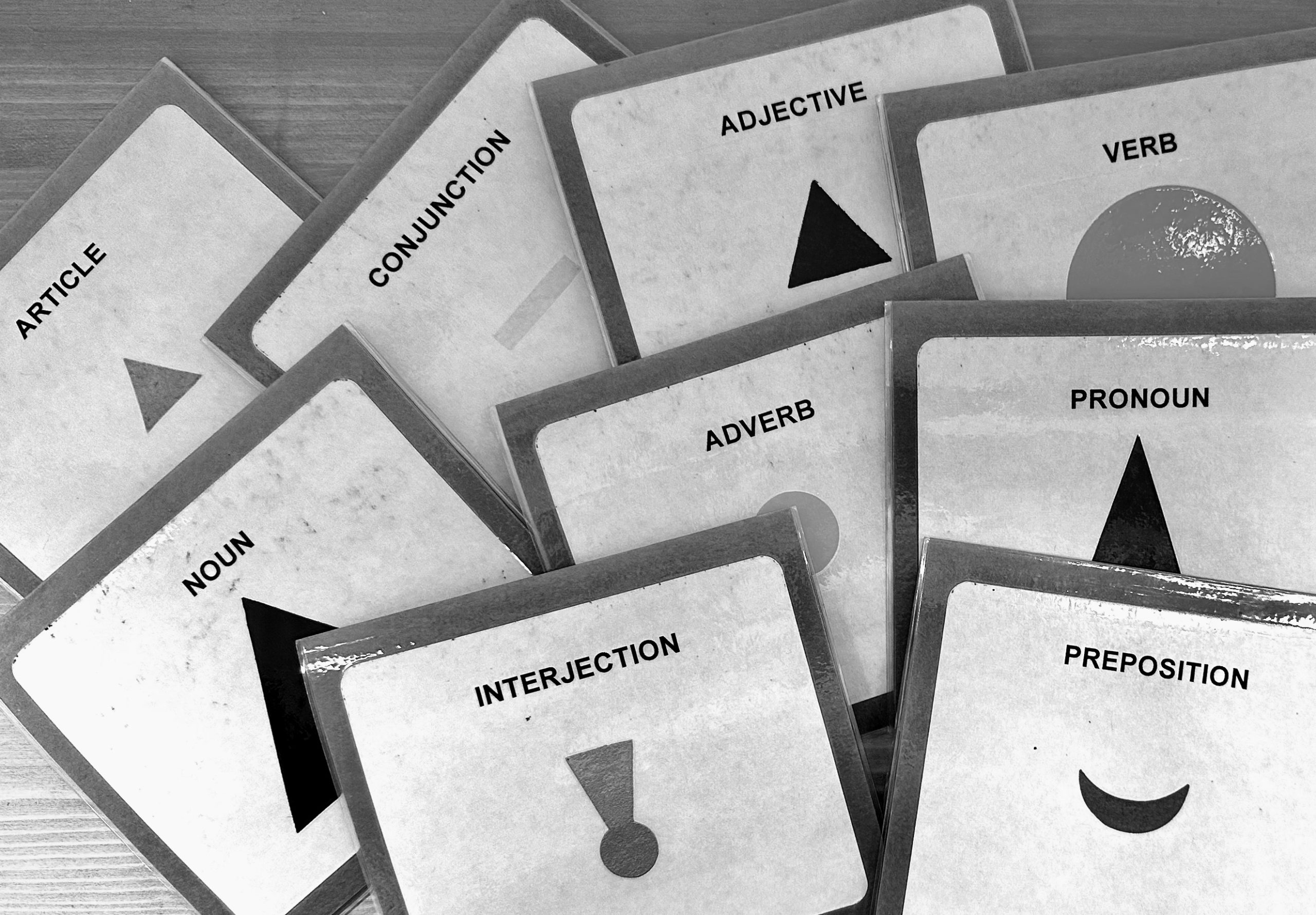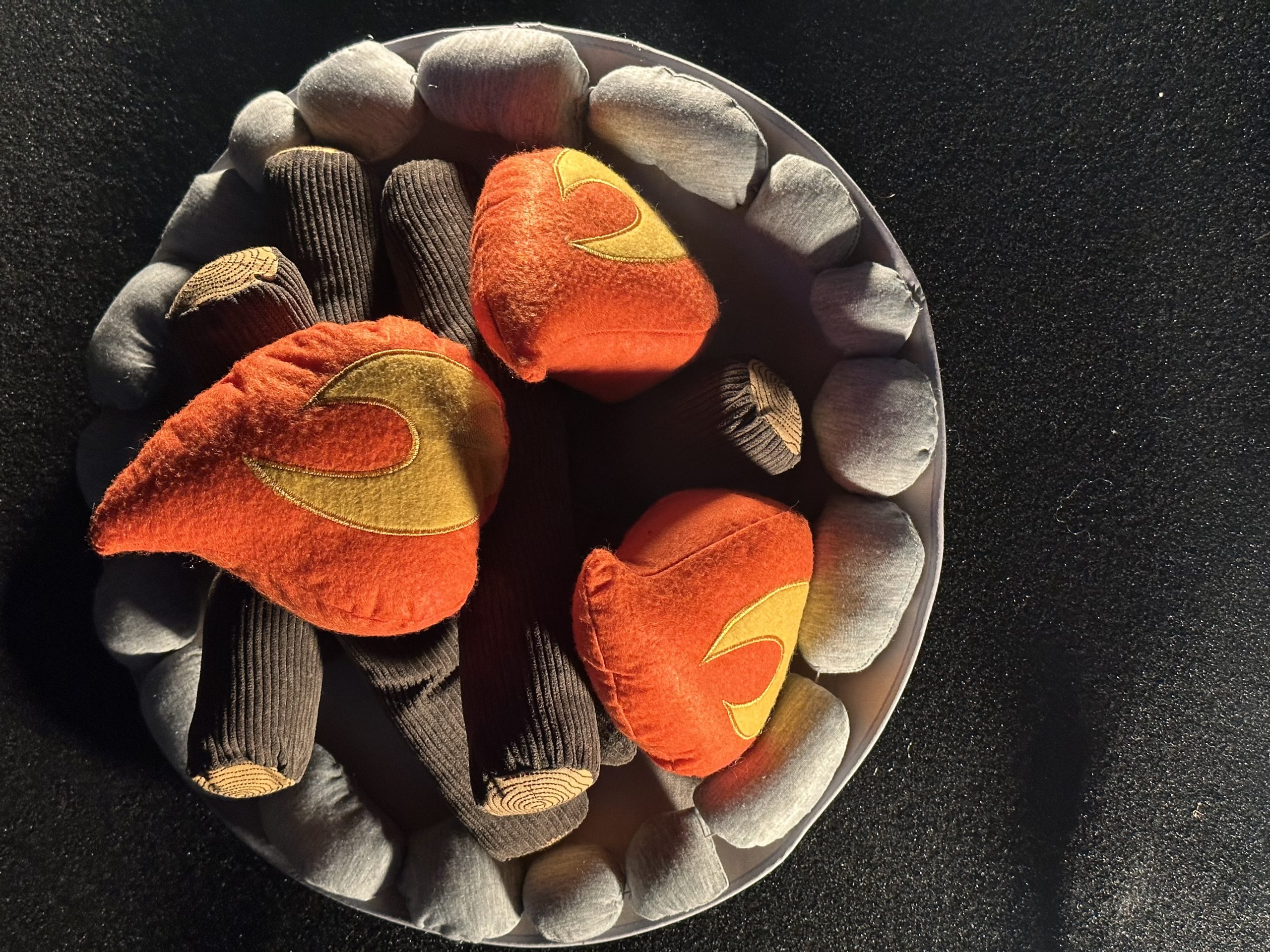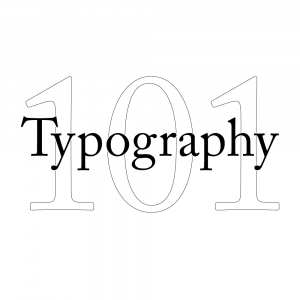Grammar is simply the study of how words combine to form sentences. Words are like putty, they can change purpose depending on how they combine with other words in the context of a sentence. Grammar is complex and essential.
But grammar does NOT come first.
So let’s talk grammar.
Once upon a time I had a conversation with a fellow educator who believed that, if we simply gave young children quality art supplies—Windsor Newton paints, sable brushes, stretched canvas—and let them explore, they would create little masterpieces. Certainly not the kind that would hang in the Louvre, but she truly believed children would learn art-making via materials. This is NOT the case.
Learning an art form involves work.
Work is the only path to beauty.
There is no shortcut.
Visual arts, music, dance, woodwork, knitting, weaving, and more fall into this category. Each art form is founded with unique elements of grammar. Line, shape, texture, value, and color are the grammar of visual art. Melody, harmony, rhythm, texture, timbre, and dynamics are the grammar of music. Body, action, space, time, and energy for dance. Within each art form, the artist who has mastered the grammar, is able to use that grammar to bring shape to an original idea. Think Mona Lisa. Think Beethoven’s 5th Symphony. Think Balanchine’s Nutcracker. Think Shakepeare’s Romeo and Juliet. All these works of art began with an original idea. Writing is an art form that always begins with an original idea.
Art is never born of grammar first.
Art is always idea first.
Grammar is simply at the disposal of the artist. Form follows function. Function is rooted in the idea itself. Function is the reason the art maker is motivated to make art. Form, or grammar, simply enables the artist to bring shape to the idea.
When it comes to writing, who of us, when we want to write an idea in sentence form, ask: “Which preposition should I begin with and which verb would best demonstrate the action of the noun?”
No one, right?
Rather, being honest to our idea, we writers grab hold of its ethereal nature and courageously lift our pencil, scribbling the shape of our idea as best we can. Because we have read widely, learned to appreciate words, have a good understanding of grammar as tool, we can courageously craft. Once we have a sentence on paper, we are able to re-read, edit, and polish. This is the process of writing. This is art making.
Elements of English Grammar:
The Alphabet / Phonics – the building blocks, 26 letters that independently and in combination imitate the 44 sounds of spoken English
Words / Parts of Speech – noun, verb, adjective, adverb, article, preposition, conjunction, pronoun
Clauses – both dependent, independent
Punctuation – period, question mark, exclamation point, comma, semicolon, colon, em dash, en dash, hyphen, parentheses, brackets, braces, apostrophe, double quotation marks, single quotation marks, and ellipsis
Syntax – The way that writers arrange words and phrases in a sentence adds poignancy and pleasing poetic flavor.
The moon whimsically sang as the stars twinkled a tune in the night sky.
Whimsically, the moon sang as the tune of the stars twinkled in the night sky.
Even more, changing the position of even one word, can change the meaning of the entire sentence.
Only Sandra eats oats.
Sandra only eats oats.
Pablo Picasso once said, “Learn the rules like a pro so you can break them like an artist.”
It takes many, many years to use the rules like a pro, this does not mean that all those years should be spent entirely memorizing rules. Students of writing should be writing more than participating in grammar exercises disconnected from meaningful ideas. Students of writing should be actively engaged in the art of idea making followed by the exercise of learning how grammar might best serve their idea. Form follows function.
~Kimberly





 For those of you who are new to Blackbird & Company, and those who are seasoned users, pull up a log, and gather round the campfire!
For those of you who are new to Blackbird & Company, and those who are seasoned users, pull up a log, and gather round the campfire!
